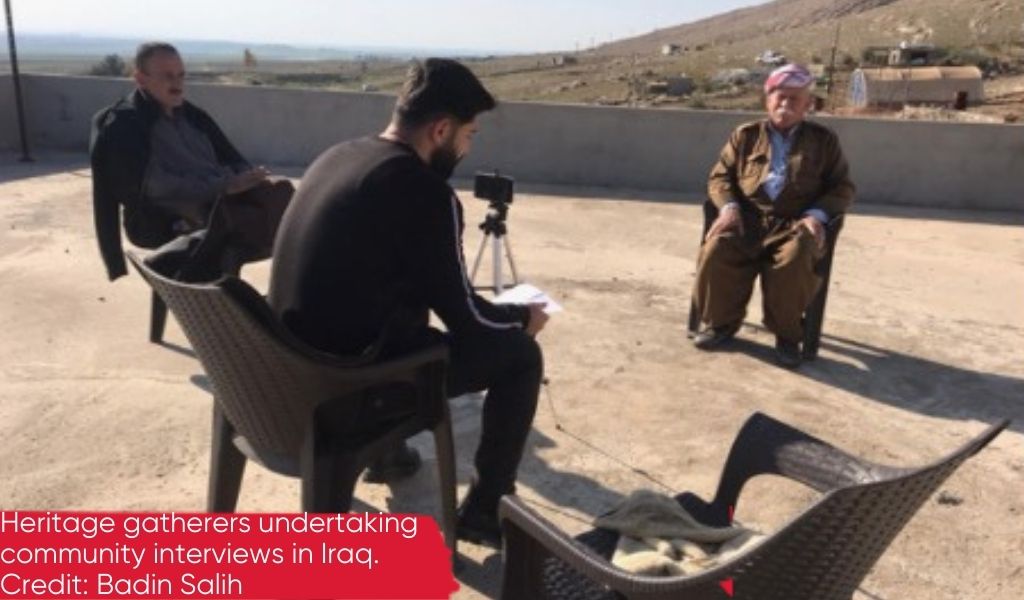On World Day for Cultural Diversity for Dialogue and Development, Sofya Shahab delves into some of the ways intolerance for cultural diversity has impacted communities in Iraq and Syria, and how heritage can be used in processes of peace, stability and development.

Promoting cultural understanding and celebrating pluralism is vital when “three-quarters of the world’s major conflicts have a cultural dimension”. In a previous blog, I unpacked some of the reasons behind the targeting of cultural heritage during conflict. As part of the second blog in this series, I delve into some of the ways intolerance for cultural diversity has impacted communities in Iraq and Syria, and how heritage can be used in processes of peace, stability and development.
The impacts of heritage destruction on cultural diversity
Groups such as Daesh targeted heritage belonging to communities who did not fit within their homogenous vision of society. This flagrant disregard for cultural diversity led to the persecution and genocide of religious minority communities, and the desecration of tangible heritage sites such as Nimrud in Iraq, which dated back over 3,000 years.
By attacking these communities and their heritage, Daesh also threatened the intangible practices associated with them, which help cultivate identity and belonging. These populations and their practices are part of the cultural diversity of Iraq and Syria, and this is now under threat as those from religious minority communities were forced to flee their homes.
Over 15 million people were displaced in Syria and Iraq as a result of these conflicts with many still living as IDPs and refugees in neighbouring countries and beyond. Communities are therefore uprooted and dispersed, making it harder for them to maintain their cultural practices, especially where these are linked to place.
The challenges of maintaining heritage practices amidst displacement
Nina was living in Marka, on the outskirts of Amman in Jordan when I first met her, she was originally from Baghdad but had been forced to leave due to ongoing threats and attacks against the Christian community in Iraq. She described the impact of the dispersal of her community as follows:
“In Jordan it is difficult to maintain these things that make us Assyrian. There aren’t many people here to practice our traditions, the communities are mixed. Usually everything takes place within the community. But now all the families are separated. I only have three members of my family in Jordan. The Babylon new year would be a special day for us. We all congregate together and then walk in a procession waving our own special flag and in our Assyrian dress. I used to be very happy because I felt that I belonged in this place. But we aren’t able to do this in Jordan.” (Nina, Baghdad)
As well as affecting those who belong to these communities, the loss of cultural diversity through genocide, destruction and emigration is also a loss for the whole population. As UNESCO notes, such cultural diversity is “a driving force of development”, contributing to “intellectual, emotional, moral and spiritual life”, as well as economic growth.
What can be done to combat the effects of destruction and promote acceptance and recognition of cultural diversity?
As part of the Coalition for Religious Equality and Inclusive Development (CREID), we have been working alongside the University of Mosul and the University of Dohuk in Iraq to train and support young people from religious minority communities in the collection and documentation of their heritage. Through oral history interviews with elders in their communities as well as photography and video documentation, heritage which was at risk of being lost or forgotten is now being preserved through digital archiving techniques, while heritage which has been destroyed is also being recorded through shared memories.
Research has shown that, following the civil war in Spain (1936-39) and more recently, the conflict in the Balkans over the 1990s “refugees and displaced people did not return to their former towns and villages until rebuilding of significant heritage sites occurred”. Documenting and protecting heritage in Iraq is, therefore, an important aspect of encouraging those who have been displaced to return, and ultimately will help promote social cohesion and cultural diversity by reinforcing the bonds between communities and places.
Additionally, by specifically engaging young men and women in this heritage gathering process, CREID is supporting them as agents in their own and their communities’ futures. It helps to foster relationships within and between community members, and foregrounds young people as valuable leaders in saving, promoting, and sharing their heritage.
As well as creating community archives relating to their heritage, young people have also engaged in outreach activities to raise awareness, record and celebrate different aspects of their heritage. This has included blogs, social media outputs, and digital stories which combine audio-visual materials. Using media outputs and digital technologies to promote acceptance and recognition of cultural diversity is a vital aspect in enhancing dialogue between different cultures and contributing towards respect and mutual understanding.
